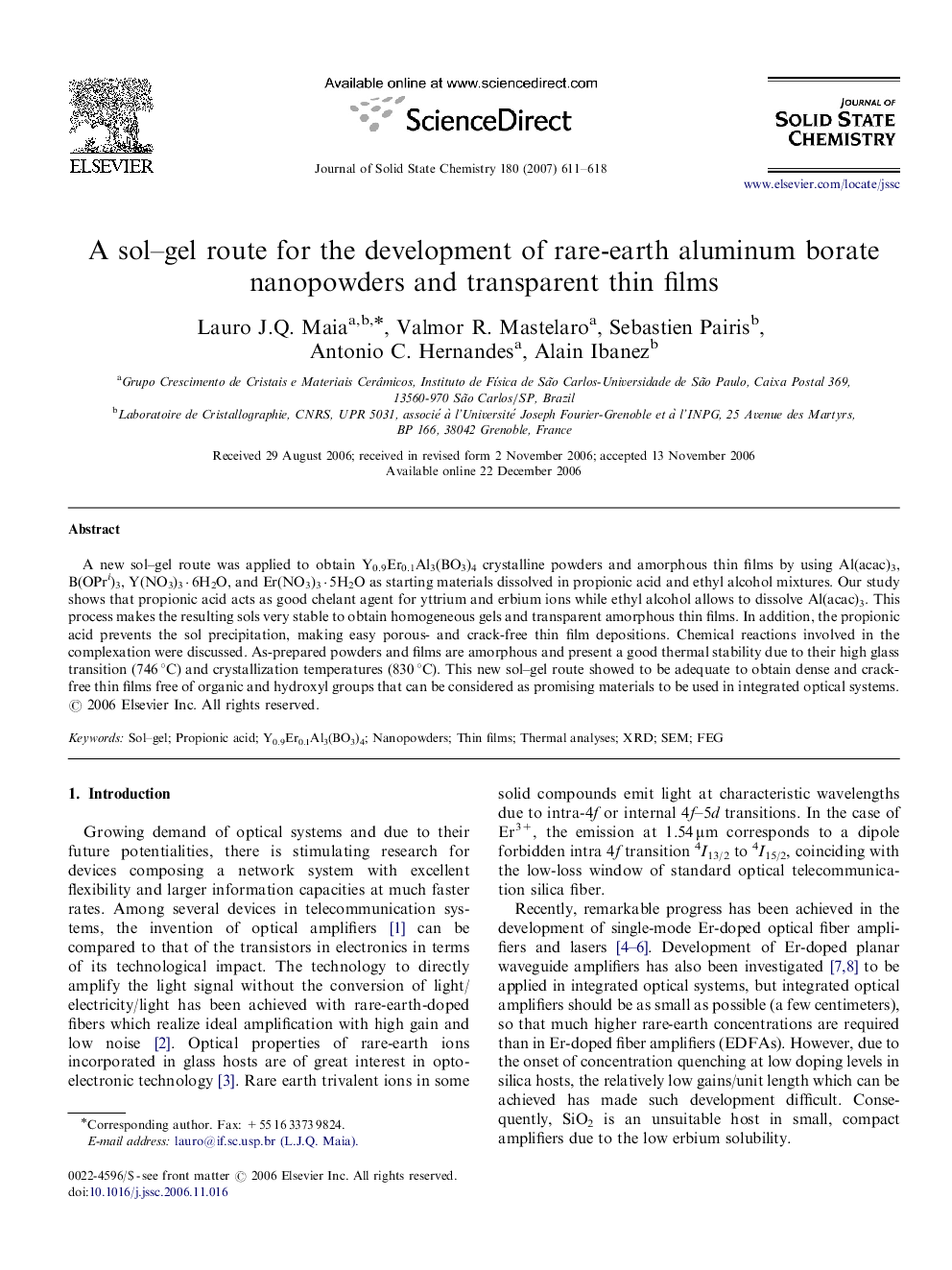| Article ID | Journal | Published Year | Pages | File Type |
|---|---|---|---|---|
| 1333427 | Journal of Solid State Chemistry | 2007 | 8 Pages |
A new sol–gel route was applied to obtain Y0.9Er0.1Al3(BO3)4 crystalline powders and amorphous thin films by using Al(acac)3, B(OPri)3, Y(NO3)3·6H2O, and Er(NO3)3·5H2O as starting materials dissolved in propionic acid and ethyl alcohol mixtures. Our study shows that propionic acid acts as good chelant agent for yttrium and erbium ions while ethyl alcohol allows to dissolve Al(acac)3. This process makes the resulting sols very stable to obtain homogeneous gels and transparent amorphous thin films. In addition, the propionic acid prevents the sol precipitation, making easy porous- and crack-free thin film depositions. Chemical reactions involved in the complexation were discussed. As-prepared powders and films are amorphous and present a good thermal stability due to their high glass transition (746 °C) and crystallization temperatures (830 °C). This new sol–gel route showed to be adequate to obtain dense and crack-free thin films free of organic and hydroxyl groups that can be considered as promising materials to be used in integrated optical systems.
Graphical abstractSEM micrograph of Y0.9Er0.1Al3(BO3)4 powders calcined at 400 and 700 °C during 24 h and heat-treated at 1150 °C.Figure optionsDownload full-size imageDownload as PowerPoint slide
